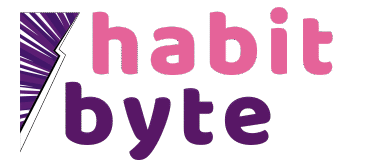How to Manage Stress with Mindfulness Meditation in 10 Minutes a Day
Stress can hijack your attention, sleep, and mood, often when you need clarity the most. Mindfulness meditation offers a simple, repeatable way to calm your nervous system and regain steady focus. In this guide, you’ll learn a practical 10-minute routine, micro-resets you can use anywhere, and habit tips so the practice actually sticks. Start today and feel more centered in the moments that used to derail your day.
Why Mindfulness Works for Stress
When you’re stressed, your brain’s threat center turns up the volume and your body speeds up. Mindfulness trains you to notice sensations, thoughts, and emotions without being swept away. Over time, this practice helps you pause before reacting, strengthen attention, and shift your body into a calmer “rest-and-digest” state, making better choices easier under pressure.
Step 1: Set up your 10-minute practice container
Pick a quiet spot and a consistent time. Sit upright and relaxed in a chair or on a cushion. Set a timer for 10 minutes or open a guided audio so you’re not checking the clock. Tell yourself, “For the next 10 minutes, the only job is to pay attention.”
- Instructions: Silence notifications, place both feet on the floor, soften your jaw and shoulders, and let your hands rest comfortably.
- Context: Removing friction up front reduces mind wandering and the urge to quit early.
- Example: Before your first meeting, sit at your desk, start a 10-minute track, and put your phone screen face down.
Step 2: Find your anchor and breathe naturally
Choose one anchor: the feeling of air at your nostrils, the rise and fall of your belly, or the sensation of your feet on the floor. Keep your breath natural while gently resting attention on that anchor. When the mind wanders, note it kindly and return.
- Instructions: Aim for soft focus, like watching a candle flame rather than staring at it.
- Context: Anchoring stabilizes attention and signals safety to the nervous system.
- Example cue: In… out… belly rising… belly falling… returning to the next breath, one at a time.
Step 3: Name thoughts and return to the breath
When thoughts or emotions pull you away, label them briefly and lightly, then return to your anchor. The label reduces stickiness and helps you reset without self-criticism.
- Instructions: Use simple, neutral tags like planning, worrying, or remembering. Then guide attention back to the breath.
- Context: Noticing and returning is the strength training of mindfulness; each repetition builds resilience under stress.
- Example: “Worrying again… back to the breath.” If agitation is high, lengthen your exhale for a few rounds (inhale 4, exhale 6).
Step 4: Scan the body and release 5 percent of tension
Gently sweep attention from forehead to jaw, neck and shoulders, chest and belly, hips, legs, and feet. Wherever you notice tightness, exhale and invite a small softening, about 5 percent, so you don’t force relaxation.
- Instructions: Pause longer in common hot spots like jaw and shoulders; imagine them melting down on the exhale.
- Context: Relaxing micro-tension lowers physical stress signals, which calms the mind in return.
- Example: “Jaw tight… soften a little… shoulders heavy… soften a little,” while continuing to track the next breath.
Step 5: Expand awareness and choose one next step
Let your focus widen to include breath, body, and sounds. Hold this broader awareness gently for a minute. Then close by setting a clear, helpful intention for what you’ll do next.
- Instructions: Ask, “What would be most supportive in the next hour?” Pick one action and name it.
- Context: Bridging meditation to action turns calm into practical momentum.
- Example: “I’ll draft the first three lines of that email,” or “I’ll drink water and stretch for two minutes.”
Step 6: Use 60–90 second micro-resets between tasks
Short practices keep you steady when time is tight. Use them before a difficult conversation, after a challenging email, or when you feel scattered.
- Box breathing: Inhale 4, hold 4, exhale 4, hold 4 for four rounds to stabilize attention.
- Five-sense check-in: Name one thing you can see, hear, feel, smell, and taste to re-ground in the present.
- Label and lean: Silently name the feeling (frustration, pressure), then lean into one slower breath while softening your jaw and shoulders.
Helpful tools and resources
Use simple supports to make practice easier and more consistent, especially at the start.
- Guided apps: Insight Timer, Headspace, and Calm offer beginner-friendly tracks and timers.
- Timer and reminders: Use your phone’s timer and set calendar nudges or alarm labels like “3 mindful breaths.”
- Noise options: Earplugs, white noise, or soft instrumental playlists can reduce distractions.
- Journal or notes: Jot one sentence after sessions
Conclusion: Making Mindfulness a Daily Habit
Even just 10 minutes of mindfulness meditation each day can shift how you respond to stress, helping you pause, notice, and choose instead of react. Micro-resets during the day, like a few slow breaths before a meeting or while waiting in line, extend the benefits beyond your formal practice. Over time, these small, consistent habits strengthen attention, calm the nervous system, and improve emotional balance. Remember, mindfulness isn’t about perfection or emptying your mind; it’s about showing up for yourself, noticing your experience, and cultivating steadiness. With a little practice and consistency, stress becomes more manageable, focus sharper, and each day a bit calmer.
